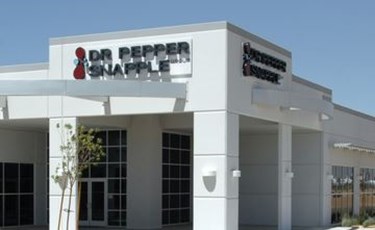Five Steps Dr Pepper Snapple Is Taking To Grow Its Market Share
By Karla Paris

While the soda market remains tepid, the beverage maker continues moving forward with product innovation
While the U.S. soda market remained flat in 2013, after three consecutive years of growth, carbonated soft drinks volumes fell by 3.2 percent, to less than 13 billion gallons. While some major players have relinquished market share during this timeframe, Dr Pepper Snapple (DPS) gained market share in the U.S.
On April 23, DPS reported on its First Quarter 2014 results a net sales increase of 1 percent is shown as sales volume also increased by 1 percent. While the market continues to take hits from health-conscience consumers choosing “healthier” beverages, DPS is moving forward in 2014 with its strategy to seize an even larger market share. Included in these are:
- Build and enhance leading brands
The company is using an on-going process of market and consumer analysis to identify key brands that it believes have the greatest potential for profitable sales growth. The business intends to invest most heavily in its key brands to drive profitable and sustainable growth by:
- Strengthening consumer awareness.
- Developing innovative products.
- Extending brands to take advantage of evolving consumer trends, improving distribution and increasing promotional effectiveness.
DPS is also focusing on new distribution agreements for emerging, high-growth third party brands in new categories that can use the company’s manufacturing and distribution network.
- Increase presence in high margin channels and packages
DPS is focused on improving its product presence in high margin channels, such as c-stores, vending machines, and small independent retail outlets, through increased selling activity and investments in coolers and other cold drink equipment. The business also intends to increase demand for high margin products like single-serve packages for many of its key brands through increased in store activity.
- Leverage its integrated business model
DPS continues leveraging its integrated business model to reduce costs by creating greater geographic manufacturing and distribution coverage. The company is doing this while becoming more flexible and responsive to the changing needs of its large retail customers by coordinating sales, service, distribution, promotions, and product launches.
- Strengthen its route-to-market
Fortifying the company’s route-to-market will ensure the ongoing health of the DPS brands. The company continues to invest in information technology to improve route productivity and data integrity and standards.
- Improve operating efficiency
DPS has been able to create multi-product manufacturing facilities which provide a region with a wide variety of its products at reduced transportation and co-packing costs. In 2011, the company launched its Rapid Continuous Improvement (RCI) initiative, which uses Lean and Six Sigma methods to deliver customer value and improve productivity. DPS set a three-year goal to improve cash productivity by $150 million through reductions in capital expenditures and working capital requirements and productivity improvements within its operations. During 2013, the company exceeded this goal.
